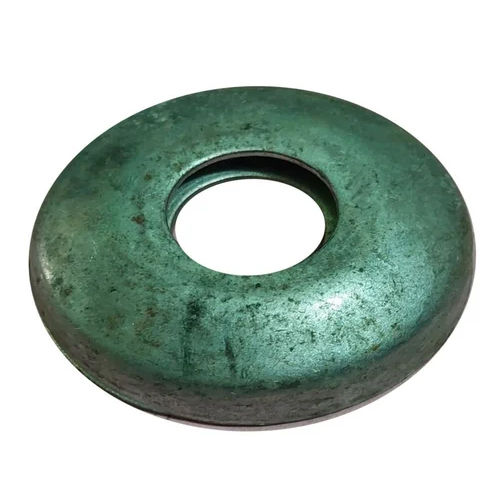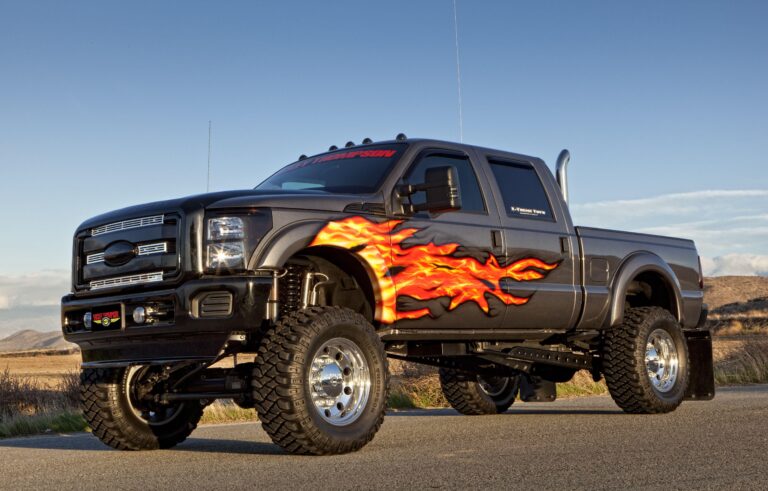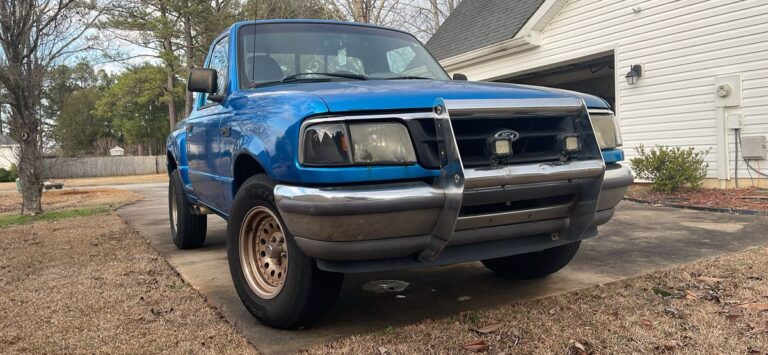Ram Truck Cap Size: The Definitive Guide to Choosing the Perfect Fit
Ram Truck Cap Size: The Definitive Guide to Choosing the Perfect Fit cars.truckstrend.com
The versatility of a Ram truck is undeniable, whether it’s for hauling equipment to a job site, transporting outdoor gear for a weekend adventure, or simply adding secure, weather-protected storage to your daily driver. A truck cap, also known as a truck topper or camper shell, significantly enhances this utility. However, the success of adding a cap hinges entirely on one critical factor: Ram Truck Cap Size. This isn’t just about picking a cap that looks like it fits; it’s about precision engineering, ensuring a seamless, secure, and functional addition to your valuable vehicle.
Understanding Ram Truck Cap Size means delving into the specific dimensions of your Ram’s truck bed – its length, width, and sometimes even the nuances of its cab design. A cap that doesn’t perfectly match these measurements can lead to a host of problems, from unsightly gaps and leaks to compromised security and even potential damage to your truck or the cap itself. This comprehensive guide will navigate the intricacies of Ram Truck Cap Size, providing you with the knowledge and practical advice needed to make an informed decision and find the ideal topper for your Ram.
Ram Truck Cap Size: The Definitive Guide to Choosing the Perfect Fit
Understanding Ram Truck Bed Dimensions: The Core of "Cap Size"
At its heart, "Ram Truck Cap Size" refers to the precise dimensions of the truck bed that a cap is designed to enclose. Unlike a universal accessory, truck caps are highly specific. The most critical measurement is the bed length, followed closely by the width of the bed rails and the cab height. Ram trucks, like most pickups, come with various bed length options depending on the model, trim, and cab configuration.
For Ram 1500 models, the most common bed lengths you’ll encounter are:
- 5 feet 7 inches (approximately 67.4 inches): Often paired with Crew Cab configurations, offering a balance of passenger space and cargo capacity.
- 6 feet 4 inches (approximately 76.3 inches): Available with both Quad Cab and Crew Cab options, providing more bed space for longer items.
For the heavier-duty Ram 2500 and 3500 trucks, designed for more substantial towing and hauling, the typical bed lengths include:
- 6 feet 4 inches (approximately 76.3 inches): A popular choice for its versatility.
- 8 feet (approximately 98.3 inches): The longest bed option, ideal for commercial use, carrying lumber, or fitting larger equipment.
Beyond length, the width of the bed rails is equally crucial. While often standardized within a specific Ram generation, subtle variations can exist, especially when comparing older models to newer ones, or different body styles (e.g., "Classic" vs. "New Body Style" Ram 1500s). The cap must sit snugly and squarely on these rails to form a weather-tight seal and maintain its structural integrity. Finally, the cab height influences whether you choose a cab-high cap that aligns perfectly with the truck’s roofline or a higher-rise cap for maximum internal volume.

Why Accurate Cap Sizing Matters: Beyond Just a Fit
The importance of precise Ram Truck Cap Size cannot be overstated. It’s not merely about aesthetics; it directly impacts the functionality, protection, and longevity of both the cap and your truck.
- Perfect Fit & Aesthetics: A properly sized cap looks like an integrated part of the truck, not an afterthought. It aligns seamlessly with the cab, and its lines flow with the vehicle’s design, enhancing its overall appearance and potentially its resale value.
- Weather Protection: The primary function of a truck cap is to protect cargo from the elements. An ill-fitting cap will have gaps, allowing rain, snow, dust, and even insects to penetrate, compromising your cargo. A precise fit ensures a tight, weather-resistant seal around the bed rails and tailgate.
- Security: Truck caps are designed to secure your belongings. If the cap doesn’t fit correctly, its locking mechanisms may not engage properly, or there could be enough play for forced entry, rendering your valuable cargo vulnerable.
- Longevity of Cap & Truck: A cap that’s too short or too long can put undue stress on its mounting points and the truck’s bed rails. This can lead to premature wear, cracking, or warping of the cap, and even damage to your truck bed over time. A snug fit distributes weight evenly and minimizes vibrations.
- Optimized Functionality: Features like roof racks, interior lighting, and ventilation systems rely on a stable, well-fitted base to operate effectively. An improper fit can hinder access to the bed or prevent these features from working as intended.

How to Measure Your Ram Truck Bed for a Cap
Accurately measuring your Ram truck bed is the most crucial step in ensuring you purchase the correct cap size. Don’t rely solely on your truck’s spec sheet, as variations can occur, and it’s always best to verify.
Tools You’ll Need:
- A long tape measure (at least 10-12 feet)
- A pen and paper to record measurements
- A helper (optional, but recommended for accuracy)
Step-by-Step Measurement Guide:
- Clear the Bed: Remove any obstacles from your truck bed, including bed liners, toolboxes, or cargo. This ensures you get true dimensions.
- Measure Bed Length (Inside):
- Open your tailgate.
- Place the end of your tape measure firmly against the inside of the bulkhead (the front wall of the truck bed, closest to the cab).
- Extend the tape measure straight back to the inside edge of the tailgate.
- Record this measurement in inches, typically to the nearest eighth of an inch. This is your primary bed length.
- Self-check: Compare this to common Ram bed lengths (67.4", 76.3", 98.3"). Your measurement should be very close.
- Measure Bed Rail Width (Outside):
- Measure the outside width of the bed rails at three points: near the cab (bulkhead), in the middle of the bed, and near the tailgate.
- Measure from the outside edge of one bed rail to the outside edge of the other.
- Record all three measurements. While they should be consistent, slight variations can indicate an issue or confirm a specific model’s subtle taper. The cap must fit over the widest point.
- Check Cab Height:
- Stand on level ground and visually assess your Ram’s cab height.
- If you plan to get a cab-high cap, ensure the cap’s design matches the height and contour of your cab roof. While not a precise measurement for ordering, it helps in selecting the correct cap type.
- Note RamBox System (if applicable): If your Ram is equipped with the RamBox Cargo Management System, you must specifically state this to the cap manufacturer or dealer. RamBox trucks require unique caps that accommodate the storage compartments on the bed rails.
Tips for Accuracy:
- Always double-check your measurements.
- Measure multiple times if unsure.
- It’s better to have a slightly larger measurement that can be padded/sealed than one that’s too small.
- When in doubt, consult with a reputable truck cap dealer. They often have databases of exact truck dimensions and can guide you.
Ram Truck Models and Their Cap Considerations
Each Ram truck model presents unique considerations for cap sizing and selection.
- Ram 1500: As the most common consumer truck, the 1500 offers diverse configurations. The choice between the 5’7" and 6’4" bed is crucial. Owners of the "Classic" body style (older generation 1500s still sold new) need to be aware that their bed dimensions might differ slightly from the "New Body Style" (DT generation) 1500s.
- Ram 2500/3500: These heavy-duty trucks typically feature 6’4" or 8′ beds. While the bed width might be similar to the 1500, the structural integrity and rail design can differ, requiring caps specifically designed for the 2500/3500. Their larger payload capacity means the caps themselves can also be heavier-duty.
- RamBox Compatibility: The innovative RamBox system, integrated into the bed rails, requires a specialized cap. Standard caps will not fit due to the width of the RamBox compartments. Cap manufacturers offer specific models designed with cutouts or wider bases to accommodate the RamBox, ensuring proper sealing and functionality. This is a non-negotiable specification.
Types of Truck Caps and Their Size Implications
While "Ram Truck Cap Size" primarily refers to the bed dimensions, the type of cap you choose also has size implications in terms of overall height and utility.
- Cab-High Caps: These are designed to match the height of your Ram’s cab, creating a streamlined, factory-integrated look. Their internal volume is limited by the bed’s inherent depth.
- Mid-Rise Caps: Offering a slight increase in height (typically 2-6 inches) above the cab, mid-rise caps provide additional internal volume for taller items without significantly impacting aerodynamics or aesthetics.
- High-Rise/Wedge Caps: These caps offer the maximum internal volume, often extending significantly above the cab or featuring a sloped "wedge" design. Ideal for commercial users or those needing to transport very bulky items. While their footprint on the bed remains tied to the Ram Truck Cap Size (bed dimensions), their overall height and shape are critical considerations.
- Commercial/Work Caps: Often made from heavy-duty aluminum or fiberglass, these caps are built for durability and functionality, frequently featuring side access doors, shelving, and ladder racks. Their fit is still dictated by the Ram Truck Cap Size, but their robust construction and specific features are tailored for demanding use.
Important Considerations When Purchasing a Ram Truck Cap
Beyond just the size, several factors will influence your purchase decision:
- New vs. Used: While a used cap can save money, finding one that perfectly matches your specific Ram Truck Cap Size and body style can be challenging. Even slight discrepancies can lead to fit issues. Always measure meticulously if considering used.
- Brand Compatibility: Stick to reputable truck cap manufacturers (e.g., ARE, Leer, SnugTop, Unicover) known for producing model-specific fits. They invest in precise molds and designs for various Ram generations.
- Installation: Professional installation is highly recommended to ensure a watertight seal, proper wiring (for lights/locks), and secure mounting. While DIY is possible, it requires technical skill and the right tools.
- Features: Consider what features you need: sliding or fixed windows, screens, interior lighting, power locks, roof racks, carpeted headliners, and pet-friendly vents. These add to the cost but enhance utility.
- Budget: Ram truck caps vary widely in price based on material, features, and brand. Align your desired features with your budget.
Challenges and Solutions in Ram Truck Cap Sizing
Even with careful measurement, challenges can arise:
- Common Mismeasurements: The biggest pitfall. Always double-check, and if possible, have a professional verify your measurements before ordering.
- RamBox System: This is a recurring challenge for owners. The solution is to explicitly order a RamBox-compatible cap. Do not attempt to modify a standard cap to fit.
- Older Ram Models: Finding new caps for very old Ram trucks (e.g., pre-2002 Dodge Rams) can be difficult, as manufacturers may no longer produce molds. Solutions include searching the used market (with careful measurement), custom fabrication (expensive), or considering universal work caps that might offer a less aesthetic but functional fit.
- Finding the "Perfect Match": Sometimes, even with correct measurements, slight manufacturing tolerances or body variations can occur. Work with a dealer who can perform professional installation and make minor adjustments (e.g., shimming, seal adjustments) to ensure a perfect, watertight fit.
Estimated Price Guide for Ram Truck Caps by Size/Type
The price of a Ram truck cap is influenced by numerous factors, including material (fiberglass, aluminum), features (windows, lighting, racks, carpet), paint matching, and brand. The "size" of the cap (i.e., fitting a longer bed) generally correlates with a higher price due to increased material usage. Below is an estimated price guide; actual prices will vary by dealer, region, and specific options chosen.
| Ram Bed Length | Ram Truck Model (Example) | Cap Type (Common) | Estimated Price Range (USD) | Notes |
|---|---|---|---|---|
| 5′ 7" | Ram 1500 (Crew Cab) | Basic Fiberglass Cab-High | $1,800 – $2,500 | Entry-level, fixed front window, no interior light, unpainted. |
| 5′ 7" | Ram 1500 (Crew Cab) | Premium Fiberglass Cab-High | $2,600 – $3,500+ | Custom paint match, sliding windows, interior light, carpeted. |
| 5′ 7" | Ram 1500 (Crew Cab) | Fiberglass Mid-Rise/High-Rise | $2,800 – $3,800+ | Increased interior volume, often with additional features. |
| 5′ 7" | Ram 1500 (Crew Cab) | Aluminum Commercial | $2,000 – $3,000+ | Durable, often unpainted, side access doors, basic features. |
| 6′ 4" | Ram 1500 (Quad/Crew Cab) | Basic Fiberglass Cab-High | $1,900 – $2,600 | Price slightly higher than 5’7" due to increased material. |
| 6′ 4" | Ram 1500 (Quad/Crew Cab) | Premium Fiberglass Cab-High | $2,700 – $3,600+ | Full feature set, precise paint match. |
| 6′ 4" | Ram 1500/2500/3500 | Fiberglass Mid-Rise/High-Rise | $2,900 – $4,000+ | Ideal for larger cargo, available for HD trucks. |
| 6′ 4" | Ram 1500/2500/3500 | Aluminum Commercial | $2,100 – $3,200+ | Robust, practical, for work or utility. |
| 8′ 0" | Ram 2500/3500 | Basic Fiberglass Cab-High | $2,100 – $2,900 | Longest bed, higher material cost. |
| 8′ 0" | Ram 2500/3500 | Premium Fiberglass Cab-High | $3,000 – $4,200+ | Maximum length, all premium features. |
| 8′ 0" | Ram 2500/3500 | Aluminum Commercial | $2,300 – $3,500+ | Heavy-duty, often with interior shelving options. |
| All RamBox Beds | All Models | Any Cap Type (RamBox Spec) | Add $300 – $800+ | Requires specific RamBox-compatible design, adds to base price. |
Note: Prices do not include installation, which can range from $150 to $300, or additional accessories like roof racks, interior lighting kits, or power locks.
Frequently Asked Questions (FAQ) about Ram Truck Cap Size
Q1: Can I use a cap from a different truck brand (e.g., Ford or Chevy) on my Ram?
A1: No, absolutely not. Truck beds, even if they appear similar in length, have different widths, rail contours, and tailgate designs unique to each manufacturer and even specific model years. A cap designed for a Ford F-150 will not properly fit a Ram 1500, leading to gaps, leaks, and potential damage.
Q2: Does the RamBox system affect cap sizing?
A2: Yes, significantly. The RamBox Cargo Management System integrates storage compartments into the bed rails, making the bed opening narrower and requiring a specialized cap design. You must purchase a cap specifically designed for RamBox-equipped trucks.
Q3: How do I know if my Ram is a 5’7" or 6’4" bed without measuring?
A3: While measuring is always best, you can often find this information in your truck’s owner’s manual, on the manufacturer’s website by entering your VIN, or by asking a Ram dealership. Visually, the 5’7" bed is notably shorter and usually paired with Crew Cabs, while the 6’4" bed is visibly longer.
Q4: Are older Ram truck caps still available?
A4: For common older models (e.g., 3rd or 4th generation Ram 1500s), new caps are often still produced by major manufacturers. For very old or less common models, your options might be limited to the used market, which requires very careful measurement and inspection.
Q5: What’s the difference between cab-high and high-rise caps for sizing?
A5: Both cap types are sized to fit the length and width of your Ram truck bed. The difference lies in their height above the bed rails. Cab-high caps match your truck’s roofline for a streamlined look, while high-rise caps extend significantly higher to provide maximum internal cargo volume, without changing the bed footprint.
Q6: Can I install a cap myself?
A6: Yes, it’s possible for a DIY enthusiast, but it requires tools, proper lifting equipment (caps are heavy and awkward), and knowledge of wiring for lights and locks. Professional installation is highly recommended to ensure a watertight seal, proper electrical connections, and secure mounting to prevent leaks, damage, or even the cap coming off at speed.
Conclusion
Choosing the right Ram Truck Cap Size is the foundational step in enhancing your truck’s utility and appearance. It’s a precise endeavor that demands accurate measurement and a clear understanding of your specific Ram model’s characteristics. From the common bed lengths of the Ram 1500 to the heavy-duty capacities of the 2500/3500 and the unique considerations of the RamBox system, every detail matters.
By following the measurement guidelines, understanding the implications of different cap types, and considering the various factors that influence your purchase, you can confidently select a truck cap that not only fits perfectly but also provides years of reliable service and protection for your valuable cargo. Investing the time to get the "Ram Truck Cap Size" right will pay dividends in functionality, aesthetics, and peace of mind.







